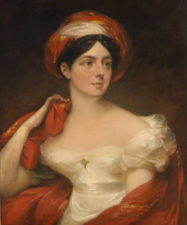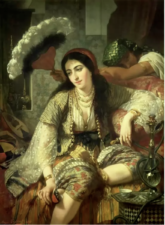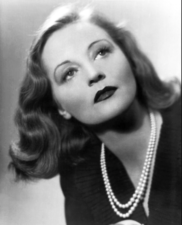Dervorgilla of Galloway was a thirteenth century noblewoman of a prestigious lineage. Her Scottish relatives were major landowners in the South of Scotland. Her mother was the daughter of Matilda and David, Prince of Scotland; she was niece to Robert Bruce of Annandale, and her brother John was to inherit the title of the Earl of Chester, making him one of the highest-ranking men in England. Dervorgilla was born in Kenmure Castle in the Kirkcudbright area of Galloway, the eldest daughter of Allan of Galloway and his wife Princess Margaret. Her birthdate is unclear but is usually located around 1214.
Little is known of her early life, but her family owned several castles in the region of Dumfries and Galloway, while Whithorn Abbey- a favourite site for religious pilgrimages- was nearby. The historical backdrop of her life was marked by religion- with British nobles crusading in the Holy Lands, and a number of Saints lived contemporaneously to her. It was a time when the churches grew in strength, Christian beliefs were consolidated and abbeys and convents flourished across Britain- not least in Dumfries-shire, home to the large Dundrennan Abbey and the smaller Glenluce. When Dervorgilla was born, King John of Robin Hood fame was on the thrown, and her father was involved in negotiating the Magna Carta- arguably the first step towards modern democracy in Britain- with him. It was also a time of wars between Scotland and England, where the Galloway castles operated as the frontline in Scottish defences.
In 1233, she married John de Balliol of Barnard Castle (c. 1212- c. 1268), who held vast estates in Northumberland just below Dervorgilla’s home in Southern Scotland. Within ten years of her marriage, Dervorgilla herself was a major landowner, inheriting the estates of her father, brother and sister after their deaths. She held lands in Galloway, Northamptonshire, Bedfordshire, and Huntingdownshire. John was a major player in British political life advising King Henry III and acting as ‘joint protector’ of Alexander III of Scotland during his minority. In 1263, he gave a bequest to the University of Oxford to fund a house of students; following later bequests from Dervorgilla, this house became Balliol College at Oxford; her seal is on the Statutes of the college. By their marriage, Dervorgilla significantly raised the status of the Balliol family both sides of the border, and the family spent most of their time living in Botel or Buittle Castle in Galloway or Barnard Castle in England. The couple had twelve children, six girls and six boys, born between around 1237 and 1255.
In 1249, Dervorgilla gave birth to her third son, and eventual heir, John Balliol, later King of Scotland. Through Dervorgilla, he was great-great-grandson of David I of Scotland. When in 1290, Margaret, Maid of Norway died without heir, the thrown of Scotland was left empty and John put in a claim. His main competitor was his relative Robert Bruce, 5th Lord of Annandale (grandfather of the famous Robert the Bruce). John had a closer blood lineage and so was elected King in 1292- but his power was never fully recognised. Both internally and externally, his rein was contested; he was forced to abdicate in 1296 during the Wars of Independence, where Edward I of England (celebrated in the Scottish national anthem) tried to invade Scotland. Ultimately, Robert the Bruce would succeed to the thrown in 1306.
Dervorgilla was widowed in 1268 and was seemingly devastated by the loss of her husband. She founded Sweetheart Abbey, just outside Dumfries, in 1273 in his memory. It was the last Cistercian house to be built in Scotland and had a chequered history, being home to Edward I during his invasion, falling into disrepair, before being restored in the 13th century. It fell out of use after the Reformation in 1560. As was customary, she had his heart removed from his body and embalmed separately. According to legend, she carried it with her, and had it buried next to her heart after she died in Sweetheart Abbey.
If the legend is true, it was not as remarkable as it seems. The heart was understood as the ‘seat of intelligence, will power, memory, emotion,’ and the source of life. Its preservation through embalming before burial acted as a physical tie, so central to understandings of intimacy in the medieval period, between the living mourners and the deceased. This practice appears to have died out in Scotland in the latter part of the seventeenth century. Until the early decades of the seventeenth century, Scots who died abroad had their hearts returned home for burial, while the practice of removing hearts from the body after death and embalming them was still practiced in the 1660s. Heart burial continued in other parts of Europe such as France until the late eighteenth century, and the heart remained an important part of the Scottish imagination into the early eighteenth century, reflected in popular addresses between couples- my heart, dear heart, sweetheart.
Dervorgilla died around 1288, leaving a legacy including Sweetheart Abbey and Balliol College in Oxford, but also Dervorgilla’s Bridge across the Nith in Dumfries, Convent of Grey Friars in Dumfries town and a Franciscan monastery in Dundee. As the poet Andrew of Wyntoun noted:
A better lady than she was nane
In al the Ile of Mare Brettane
She was well pleasant of bewté
Men suld love her for her bounté
Further Reading
Wentworthe Huyshe, Lady Dervorgilla of Galloway and her Abbey of the Sweetheart (Edinburgh, David Douglas, 1913).
Katie Barclay went to visit Sweetheart Abbey during her summer holidays. It is a remarkable building in a beautiful location.


